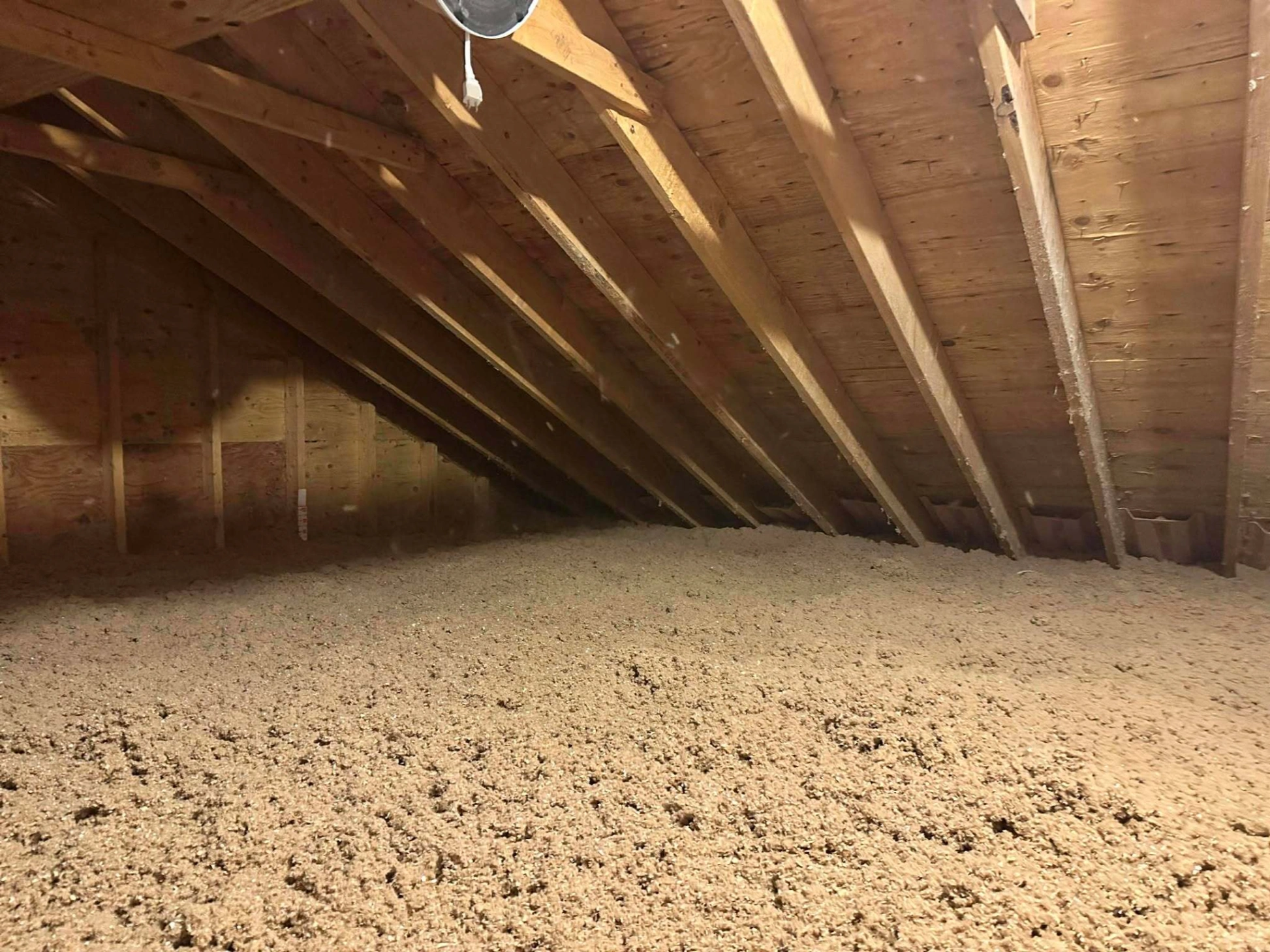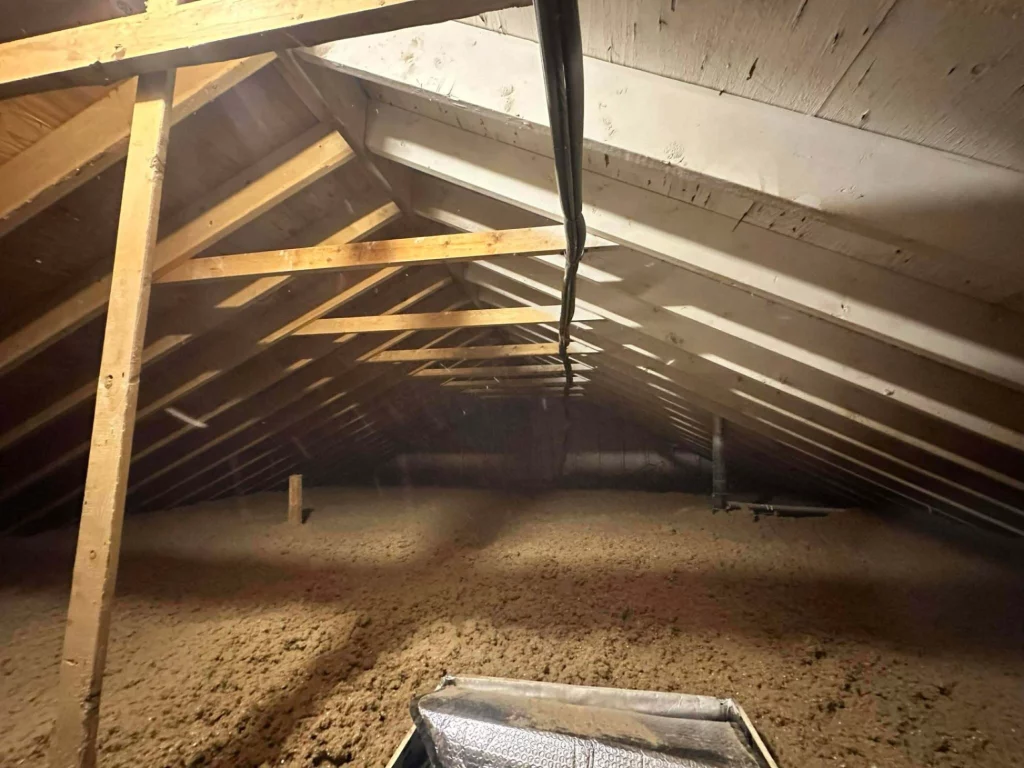
When you have blown-in insulation installed in your attic, you can expect a relatively quick and efficient process that is typically completed in a few hours. The installation team will run a long, flexible hose from a specialized truck outside your home up to the attic. Inside, a technician will expertly direct the hose to distribute a thick, uniform layer of insulation material, usually fiberglass or cellulose, over the entire attic floor. The goal is to achieve a specific depth that corresponds to the desired R-value, thereby creating a thermal blanket that effectively stops heat transfer.
Before any insulation is blown, a thorough assessment of the attic is necessary. This isn’t just about measuring the space; it’s a critical safety and performance check.
An inspector will look for:
Bonus Tip: Before the installation day, it’s a good idea to clear any personal items from the attic. If you have junction boxes or other fixtures you might need to access later, take photos of their locations so you can find them after they are covered with insulation.
On the day of the job, the process is systematic and designed to be as unobtrusive as possible.
The crew will park a large truck near your home that contains the blowing machine and bales of insulation. They will run a single large hose from this truck to the attic access point. To protect your home, they will lay down drop cloths along the path the hose travels. The blowing machine itself is quite loud, but since it remains outside, the noise level inside the house is generally manageable.
Once inside the attic, the technician performs several key preparatory tasks. They will install baffles where the roof meets the attic floor to ensure the new insulation doesn’t block airflow from the soffit vents. They’ll also place rulers or depth guides throughout the attic to ensure the material is blown to a consistent and correct height. Finally, they will weatherstrip the attic hatch or access door to prevent air leakage.
This is where the real work happens. One crew member feeds bales of compressed insulation into the hopper of the blowing machine. The machine agitates and fluffs the material, mixing it with air before sending it through the hose. In the attic, another technician manages the end of the hose, spraying the material evenly across the floor, filling gaps, and covering the tops of the ceiling joists. The goal is to create a seamless blanket with no low spots.
After the blow is complete, the team retracts the hose and removes all their equipment. They will vacuum and clean any dust or debris that may have escaped the immediate work area. A final walkthrough is performed to show you the finished work, confirming that the insulation meets the agreed-upon depth and coverage.
The two most common materials for blown-in attic insulation are fiberglass and cellulose. While both are effective, they have different properties that may make one a better fit for your home. Data from the U.S. Department of Energy shows that their thermal resistance, or R-value, can differ slightly.
| Feature | Loose-Fill Fiberglass | Blown-In Cellulose |
|---|---|---|
| Composition | Made from spun glass fibers | Made from recycled paper products |
| R-Value per Inch | 2.2 to 2.9 | 3.1 to 3.8 |
| Fire Resistance | Naturally fire-resistant | Treated with fire retardants |
| Moisture Handling | Dries quickly if wet | Can absorb and hold moisture |
| Settling | Minimal settling over time | Can settle up to 20% |
Before you commit to a project, a few factors will influence the outcome and overall value.
Insulation slows the transfer of heat, but it doesn’t stop the movement of air. Air sealing is the process of finding and closing all the little cracks and gaps in your attic floor. Skipping this step is a common mistake that significantly reduces the effectiveness of new insulation. Think of it this way: putting on a sweater on a windy day helps, but a windbreaker jacket (air sealing) makes a much bigger difference.
A well-insulated attic needs proper ventilation to function correctly. Without it, heat and moisture can get trapped, leading to condensation on the underside of the roof deck in the winter. This moisture can cause mold growth and even damage the roof structure over time. Ensure your insulation contractor has a plan to maintain or improve your attic’s airflow.
Bonus Tip: Ask your contractor about installing an insulated cover for your attic access hatch or pull-down stairs. These are often poorly sealed and represent a major weak spot in your home’s thermal barrier.

Blown-in insulation installation is a straightforward home improvement project that delivers immediate returns in comfort and long-term energy savings. The process itself is quick and handled by a professional crew with minimal disruption to your daily life. The most important steps for a homeowner are to ensure the contractor performs a thorough pre-installation check and properly air seals the attic floor. By focusing on these details, you can be confident that your investment will perform as expected for years to come.
A professional assessment is the first step toward understanding your home’s specific insulation needs. An experienced technician can identify areas of energy loss and recommend the most effective solutions. To schedule a comprehensive attic evaluation, you can contact Lamothe Spray Foam Insulation at (508) 847-0119. For inquiries or to send project details, you may also reach out via email at [email protected].
The recommended R-value depends on your climate zone. For most of the United States, the U.S. Department of Energy recommends an R-value between R-49 and R-60 for attics. This translates to roughly 16 to 22 inches of blown-in insulation, depending on the material used.
Yes, but you will need to build a raised platform. Laying boxes or flooring directly on top of the insulation will compress it and drastically reduce its R-value. A floating platform built above the level of the insulation is the correct way to retain storage space.
Cellulose insulation can settle by as much as 20% over its lifespan, which is why installers are supposed to account for this by installing it at a greater initial depth. Modern loose-fill fiberglass insulation is engineered to resist settling and will generally maintain its installed R-value over time.
Yes. Both modern fiberglass and cellulose insulation are safe. Cellulose is made from recycled paper treated with non-toxic borate for fire and pest resistance. Fiberglass is made from sand and recycled glass and is non-combustible. Neither material will release harmful fumes into your home.